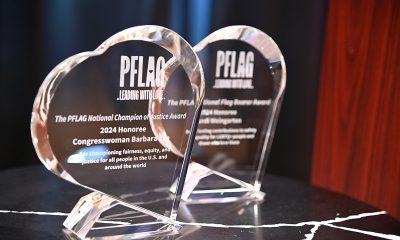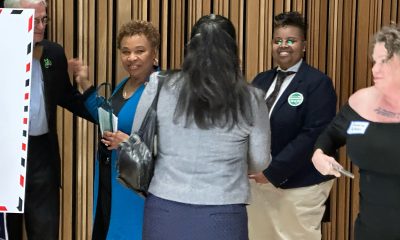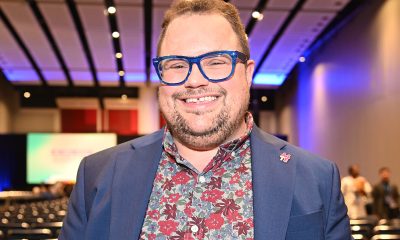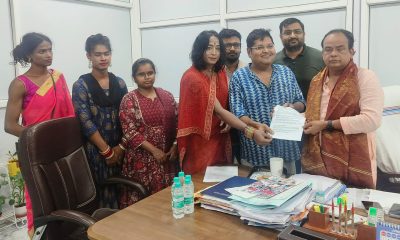Arts & Entertainment
March on Washington Film Festival boasts stellar queer content
Hybrid format features films, panel discussions, theater, and VR lab

Kevin Kodama, a 26-year-old, queer, Asian-American filmmaker, was saddened and angered by the rise in anti-Asian hate crimes during the pandemic. Then, he was a student studying film at San Francisco State University. “One of my professors encouraged me to channel my feelings {about the hate crimes} into a short film,” Kodama told the Blade.
Kodama took his professor’s advice. He wrote and directed “Shikata Ga Nai,” a poignant, compelling fantasy romance, set in a Japanese concentration camp where a lesbian couple attempts to reconcile their relationship as ghosts.
Kodama is one of the many filmmakers, theater legends and civil rights heros whose work will be showcased and honored at the March on Washington Film Festival (MOWFF) 2022 from Sept. 28 to Oct. 2.
MOWFF, in a hybrid in person and streaming format, will feature films, panel discussions, theatrical performances and the first-ever VR {virtual reality} Equity Lab in the Nation’s Capital.
From its honorees to its emerging filmmakers, the Festival has a strong queer quotient.
In its 10th year, the Festival celebrates African-American legends of theater and film who have advanced civil rights. Its theme this year is “STORY, STAGE & SCREEN.” To purchase tickets to the Festival, click here.
MOWFF was founded in 2013 on the 50th anniversary of the 1963 March on Washington. Now in its 10th year, the Festival uses the power of film, music, scholarship to tell untold stories of the unsung heroes of the American Civil Rights movement. The Festival shares these narratives to connect the past to the present and the future. For information about the Festival go to: marchonwashingtonfilmfestival.org.
MOWFF is committed to highlighting stories at the intersection of racial and LGBTQIA+ justice, David Andrusia, executive director of the Festival, told the Blade.
“We want to correct stories that have been mistold,” Andrusia, who is gay, said, “Too many are silenced and kept from telling their stories.”
This year, the Festival will bestow the John Lewis Lifetime Legacy Award to Rep. Barbara Lee, a founding member and a Vice Chair of the Congressional LGBTQ+ Equality Caucus and the Chair of the Congressional HIV/AIDS Caucus.
MOWFF2022’s other honorees are George C. Wolfe, Tony-winning director of “Angels in America” whose upcoming film “Bayard Rustin” celebrates the gay rights legend, and pioneering lesbian publicist and producer Irene Gandy, a two-time Tony Award-winner.
Lewis, Wolfe and Gandy will be honored on the Festival’s opening night.
Gandy, 78, is glad that MOWFF is being held now. “So that young people can learn about and remember Black community activists and artists who’ve fought for civil rights,” she told the Blade.
It’s important that people not forget that Harry Belafonte, Nina Simone, Mahalia Jackson and other artists were part of the 1963 March on Washington, Gandy said. “We have to honor the legacy and continue the activism of these artists,” she added.
Gandy doesn’t go into meetings thinking “I’m Black” or “I’m gay.” “That deafeats everything for everybody. It crowds all the good things out.”
There’s a long way to go, but things are changing, Gandy, who for over 50 years has been the only Black female press agent member of the Association of Theatrical Press Agents and Managers (ATPAM).
“There are more Black shows now – with Black actors and produces,” she said, “with more Black managers making decisions.”
In addition to being a groundbreaking press agent and producer, Gandy is a fashionista. In 2008, she became the first female press agent to be immortalized with a Sardi’s caricature. Known for her furs, in 2015, Gandy launched
a signature collection featured in “Vogue” and her Lady Irene Fur line debuted earlier this year.
On a recent evening as she walked out of a theater on to Broadway, Gandy had an awesome encounter with a father and his five-year-old child. “The child was trans,” she said, “the child was biologically a boy. But when the Dad called him by a boy’s name, the child said ‘I’m a girl.’”
“This little, trans person didn’t know who I was – that I had won the Tonys,” Gandy said, “but she said to me ‘I love your style!’”
If they know who they are, everyone has a story to tell, she added.
The stories to be highlighted at the Festival include “Maurice Hines: Bring Them Back,” an intimate portrait of the trailblazing Black entertainer; “Mankiller,” a documentary about Wilma Mankiller, who became the Cherokee Nation’s first Principal Chief in 1985; and “The Defenders,” about lawyers who fought for civil rights in Mississippi in the early years of the civil rights movement.
After his meeting with his professor, Kodama had the idea of doing a story set in the concentration camps where Japanese Americans were interred during World War II.
“It’s a way of bridging the history of anti-Asian policies of that time with the anti-Asian racism and hate crimes of today,” he said.
Queer people who were interred during the War had to be closeted. “For most of the decades after the War, queer people were left out of stories told about the camps,” Kodama said.
“Because of homophobia – discomfort with queerness,” he added, “people didn’t talk about it. Same-sex couples had to pass as friends.”
“Shikata Ga Nai” was filmed on the site of one of the camps – Manzanar in Inyo County, California (a National Historic Site run by the National Park Service). “One of the nice things about my film is it will get people to talk about it {queer people in the camps} who haven’t talked about it.” (The film will be shown at MOWFF as part of the Student and Emerging Filmmaker Competitions.)
Derrick L. Middleton, a talented, 35-year-old, Black, gay filmmaker, uses his art to tell stories.
Middleton, born in Harlem in New York City, knew as a little boy that he was different. “I wasn’t yet labeled as ‘gay,’ but I felt like I didn’t fit in,” he told the Blade.
“It felt unnatural to try to be masculine in the way I was expected to be,” he added.
He, like other Black queer men, ran up against hyper-masculinity, when he went to a barbershop.
“Barbershops are critically important to the Black community,” Middleton said, “I want to honor them.”
When Black people were enslaved, one of the few things they could learn was how to cut hair, Middleton said. “When they were freed, owning a barbershop was one of the few businesses they could run,” he added.
But, heteronormity rules in many Black barbershops. Subtle or overt anti-queer slur often make you feel unsafe if you’re queer and Black in a Black barbershop.
“I had already come out to my family and friends,” Middleton said, “but I felt, to be safe, I had to go back into the closet when I went to a the barbershop.”
One day, he became angry and scared when he went to a Black barbershop. “The barber told me that he didn’t cut hair for sissies,” Middleton said.
He was so frightened that he couldn’t think of anything to say and ran out of the barbershop.
Out of this experience, Middleton made “Shape Up: Gay in the Black Barbershop,” an eye-opening, engrossing, moving documentary short about the stories of himself and other queer Black men in Black barbershops. The film premiered in 2016 at the White House and was awarded the Grand Prize for Emerging Documentary by the March on Washington Film Festival.
“I never thought that I, a boy who grew up in Harlem, would get an award at a White House ceremony when the country had a Black president,” Middleton said, “It was a dream come true.”
This year, Middleton has been selected for a VR Equity Lab and Fellowship. His work will be showcased in the Festival’s VR Equity Lab. Middleton’s VR Equity Lab project “Shape Up: Gay in the Black Barbershop” (The Series). The series is a spinoff that takes viewers on a journey to barbershops from different countries in the African Diaspora, using 360-degree video and animated interactive scenes to give viewers an immersive experience from the perspective of LGBTQ people.
“I hope that the Series will be mainstreamed on a platform like Hulu or Netflix,” Middleton said, “so that people who aren’t able to access it through VR will be able to see it.”
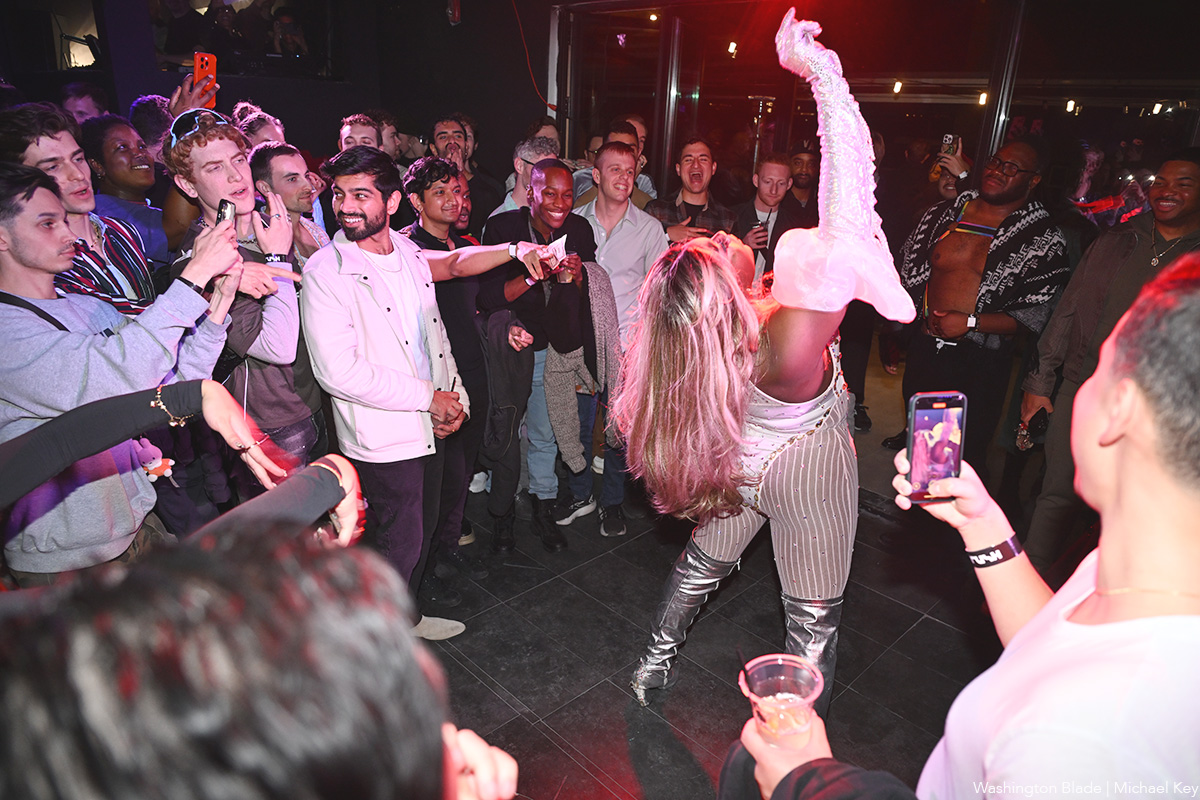
The new LGBTQ venue Rush (2001 14th Street, N.W.) held a preview night on Friday, Nov. 28. Performers included Cake Pop!, Druex Sidora and Tiara Missou.
(Washington Blade photos by Michael Key)
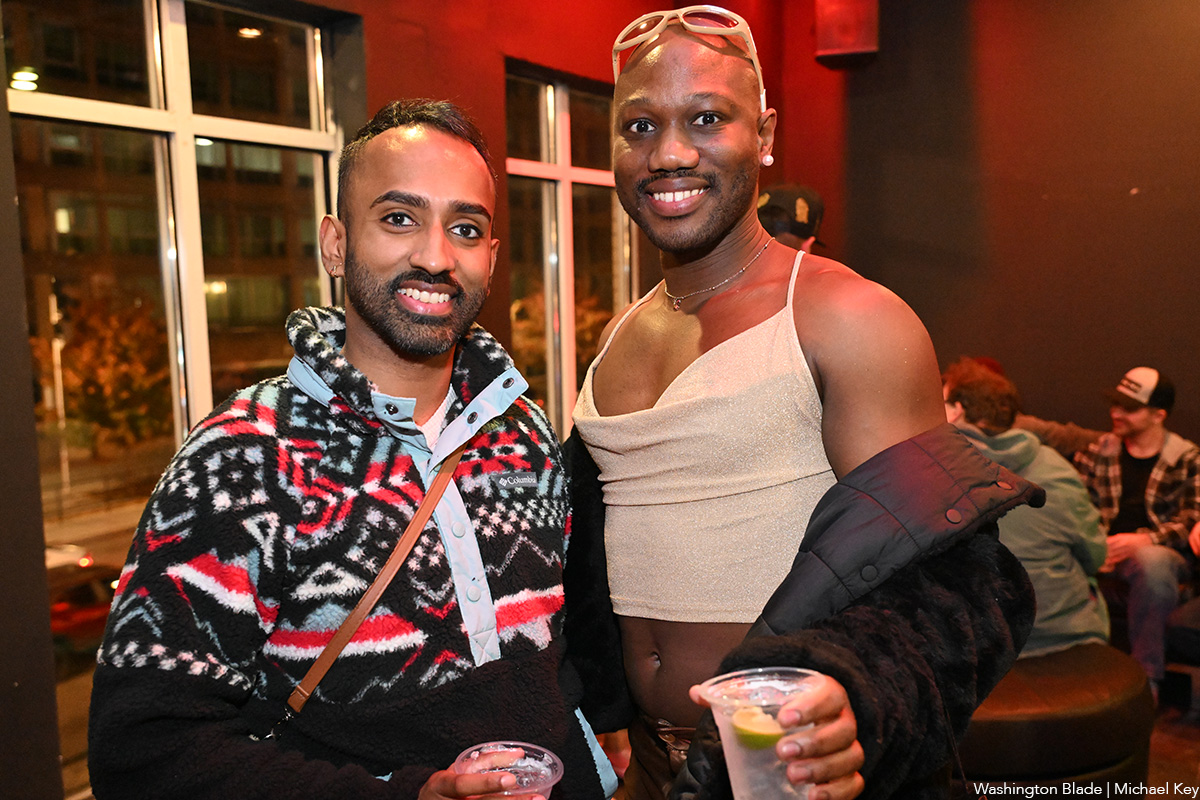
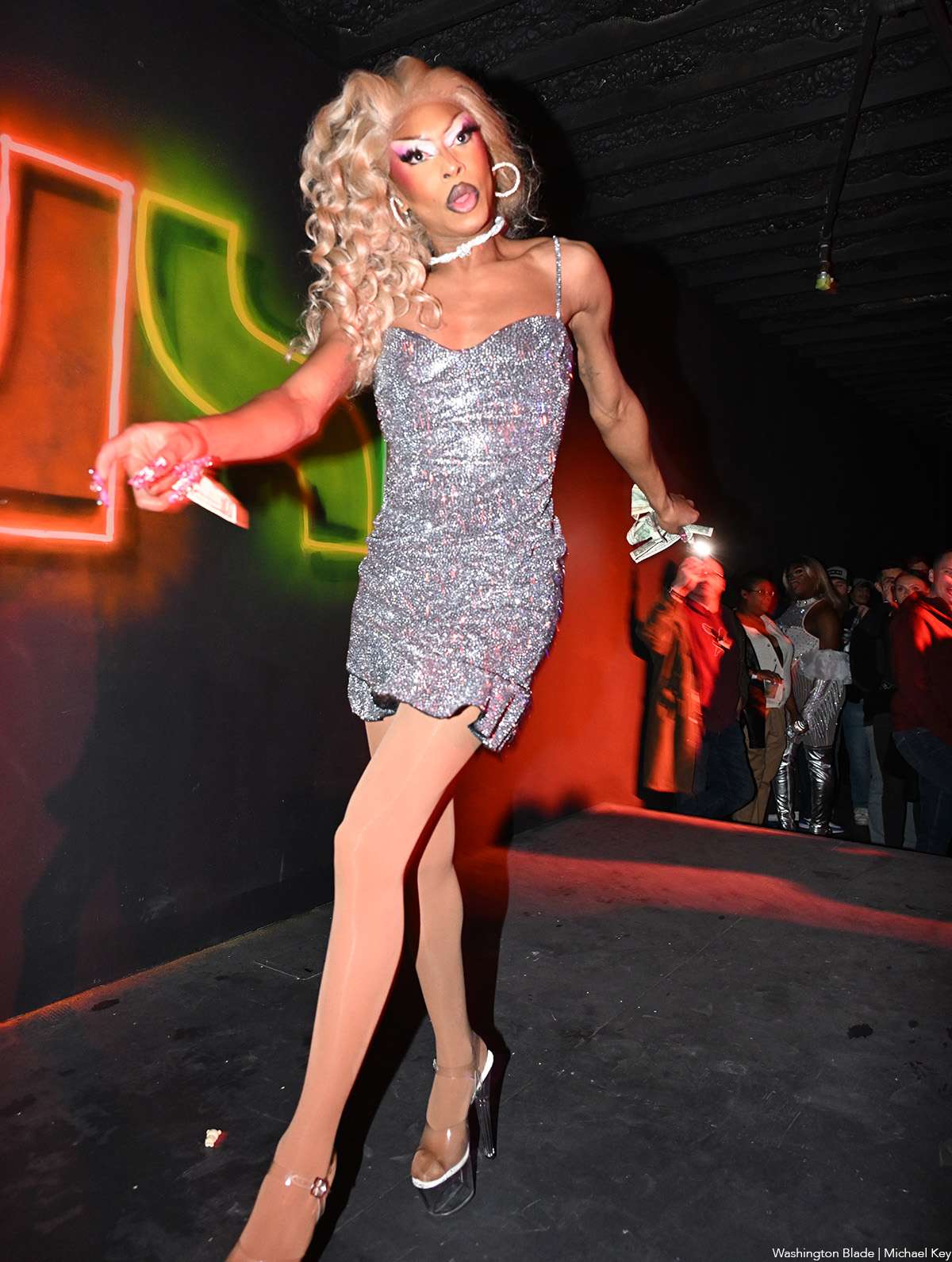
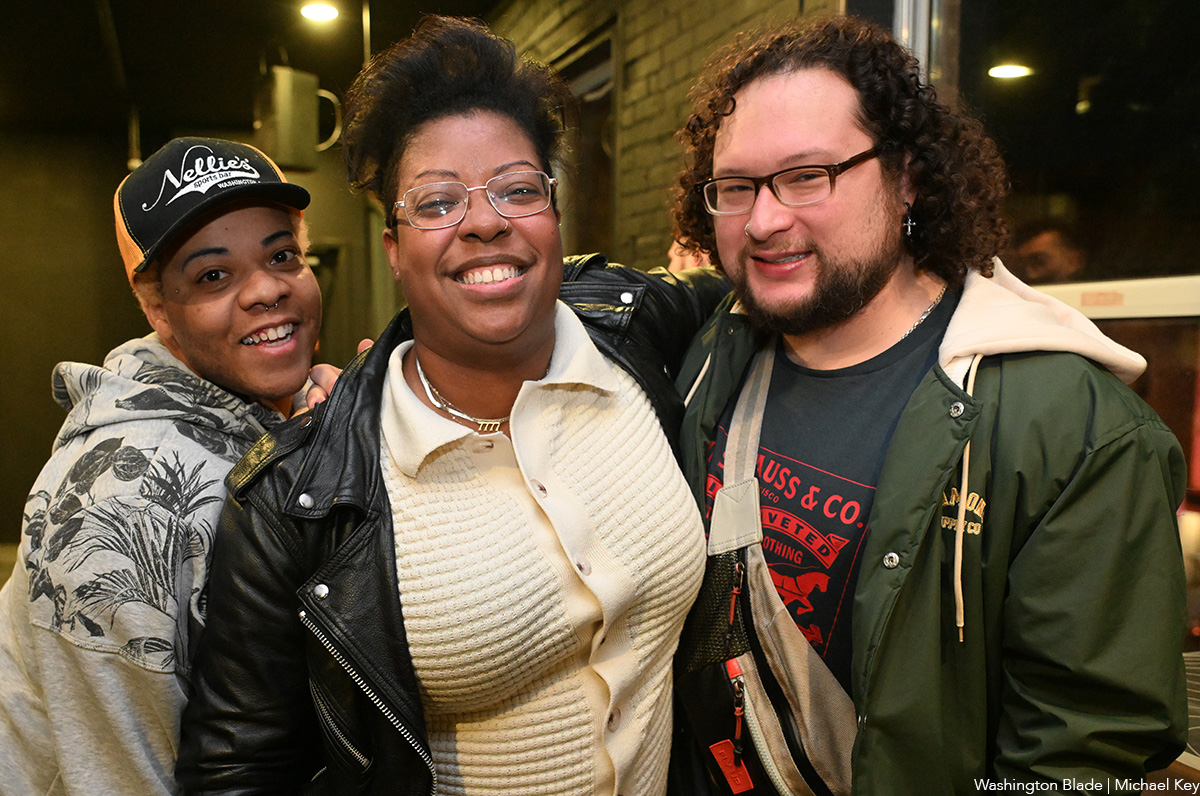
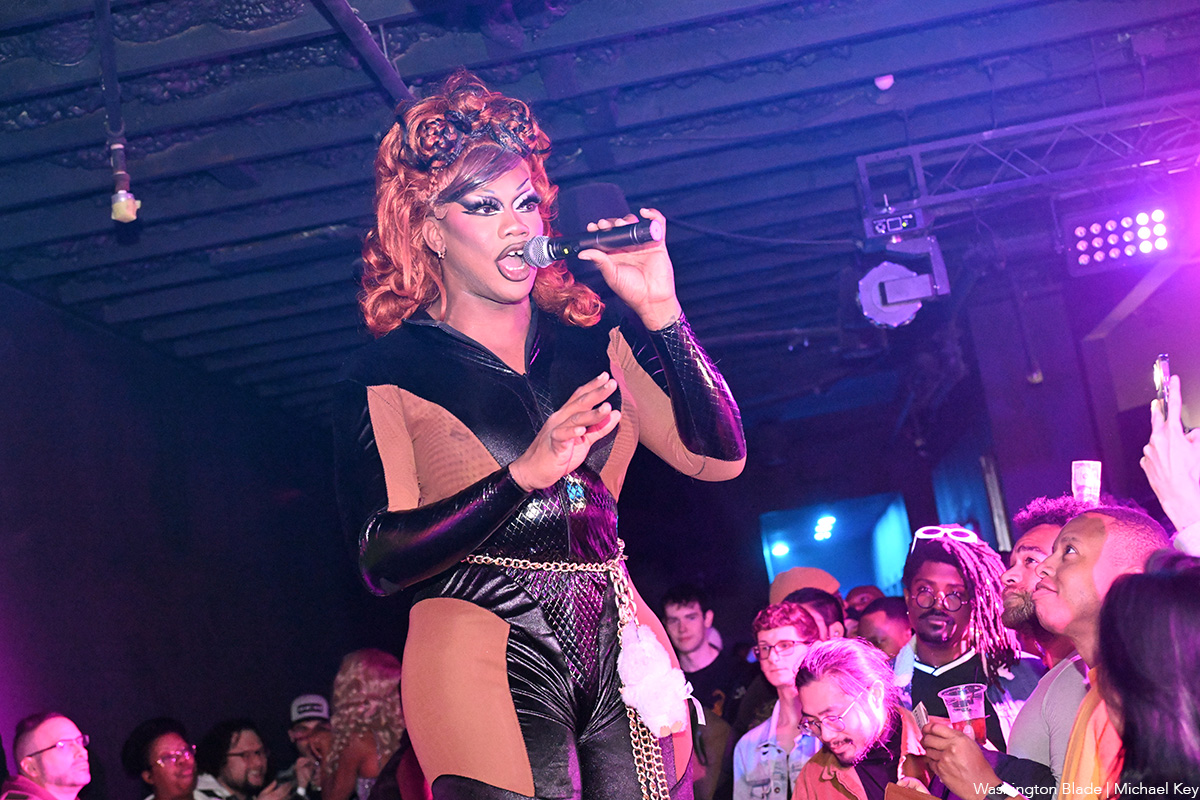
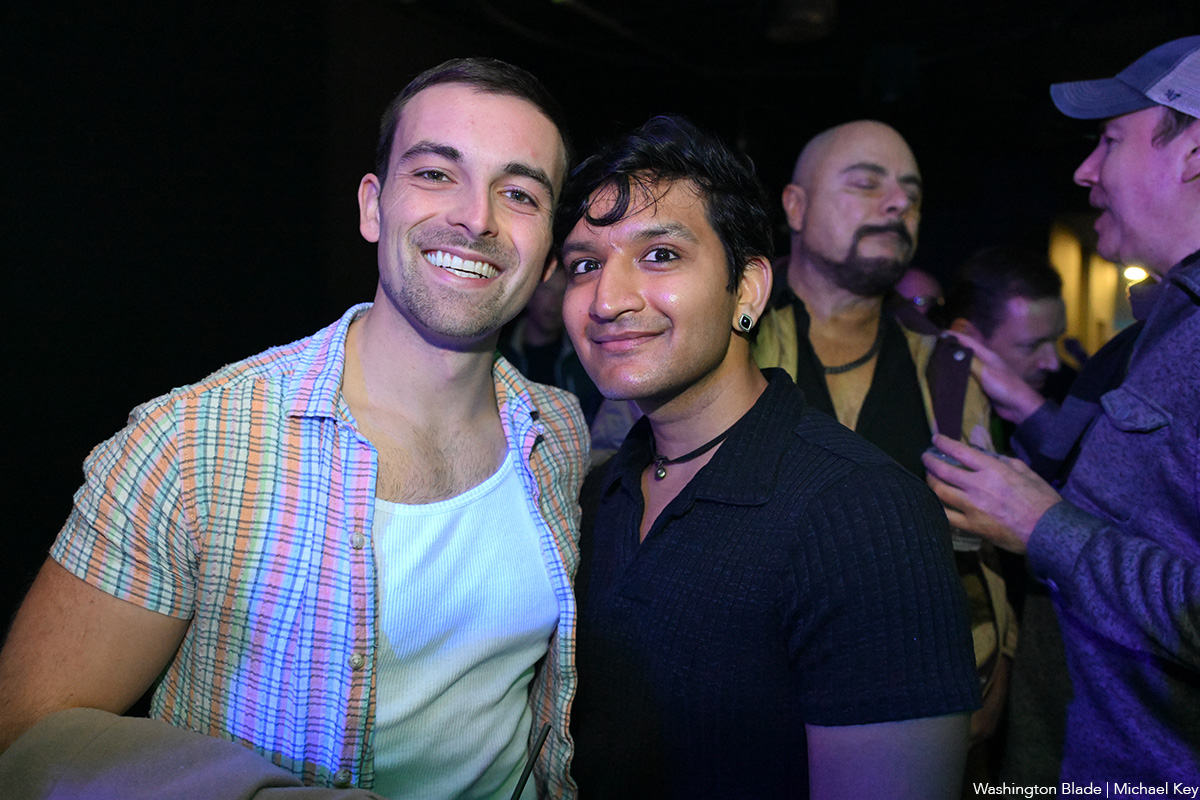
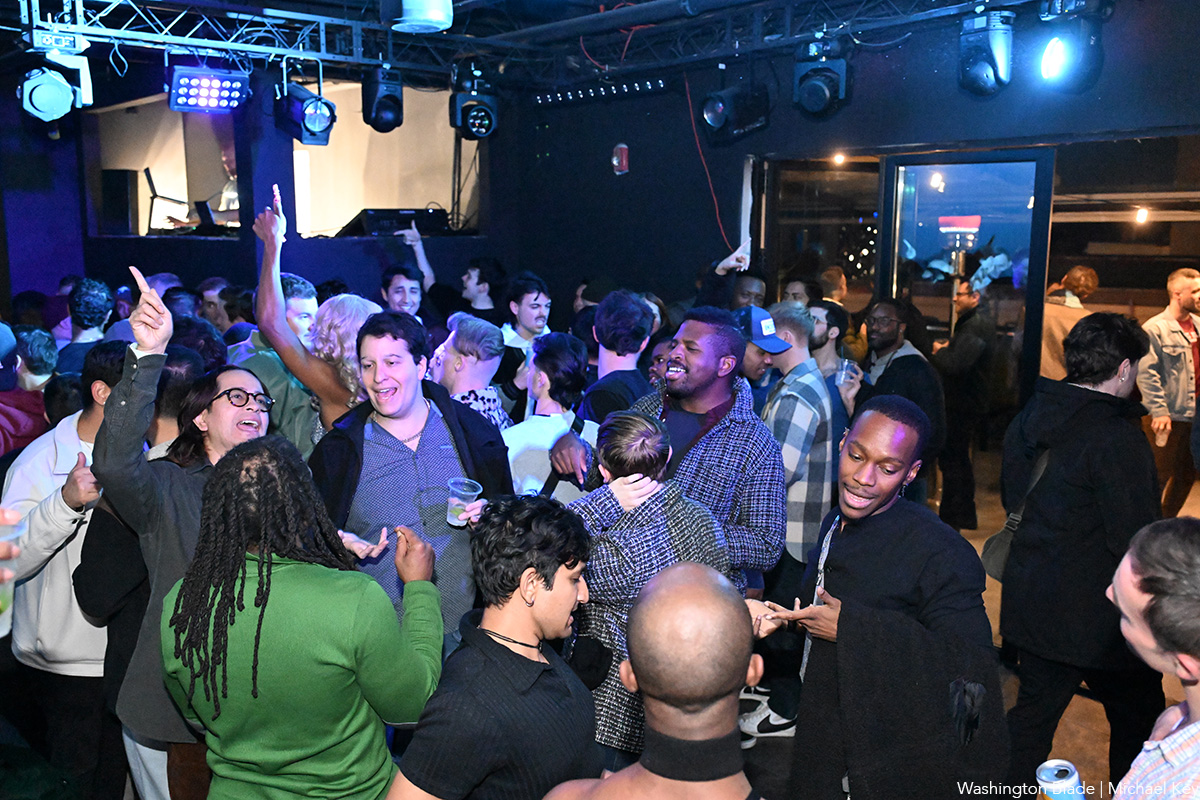
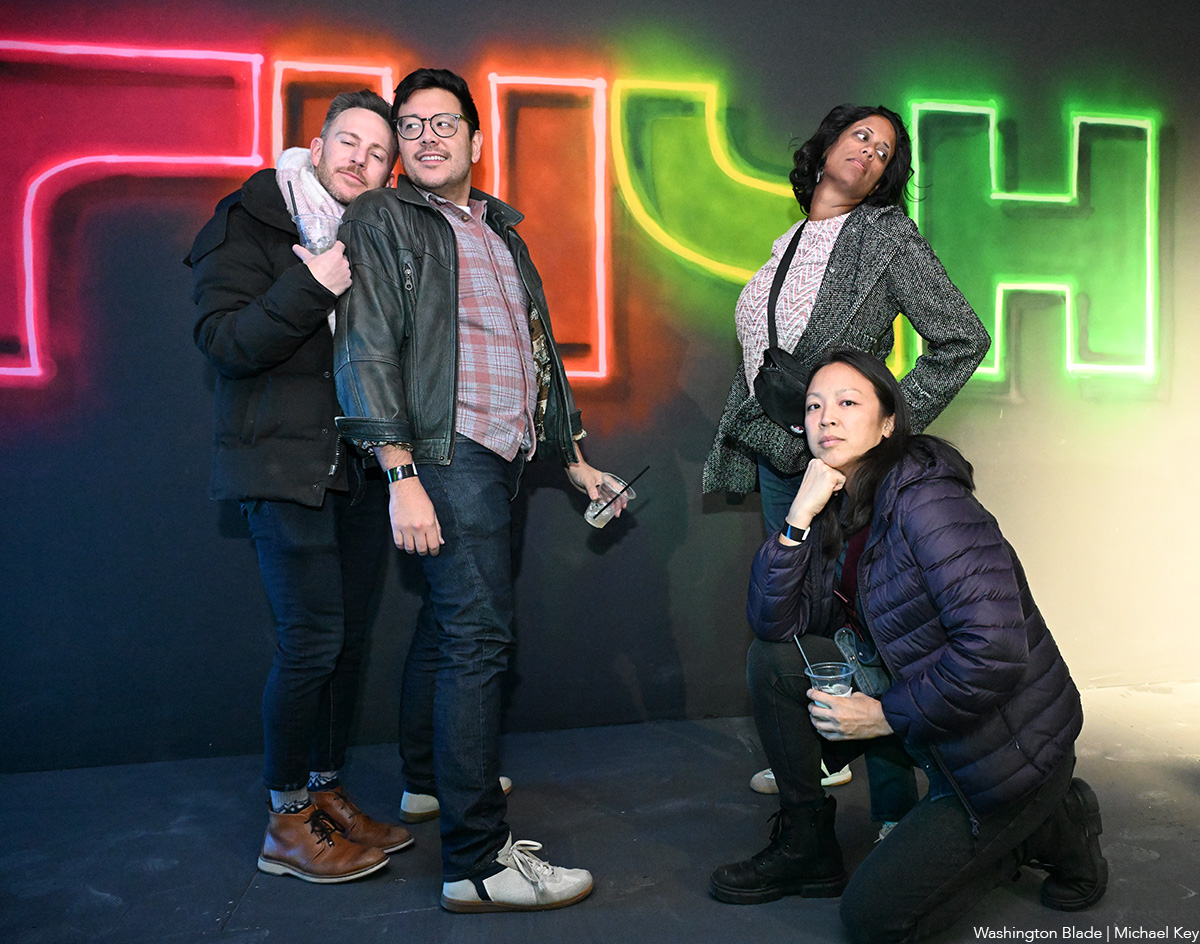

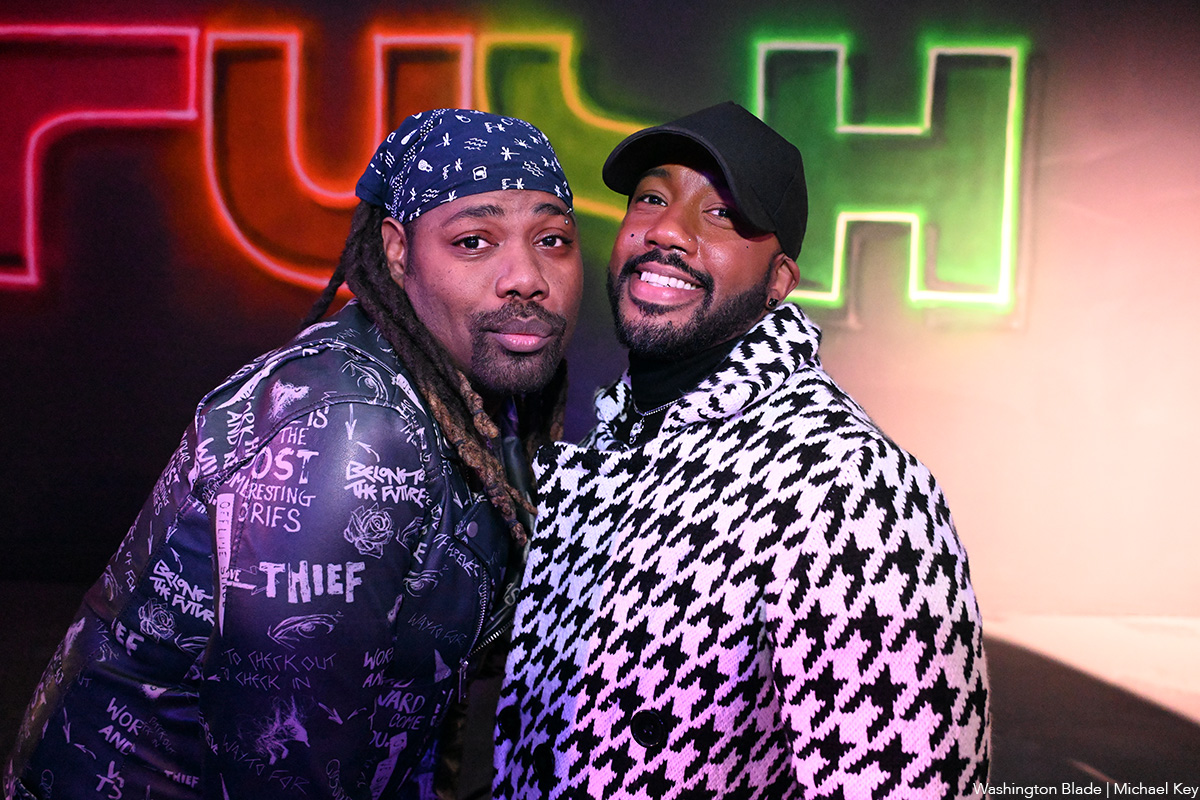
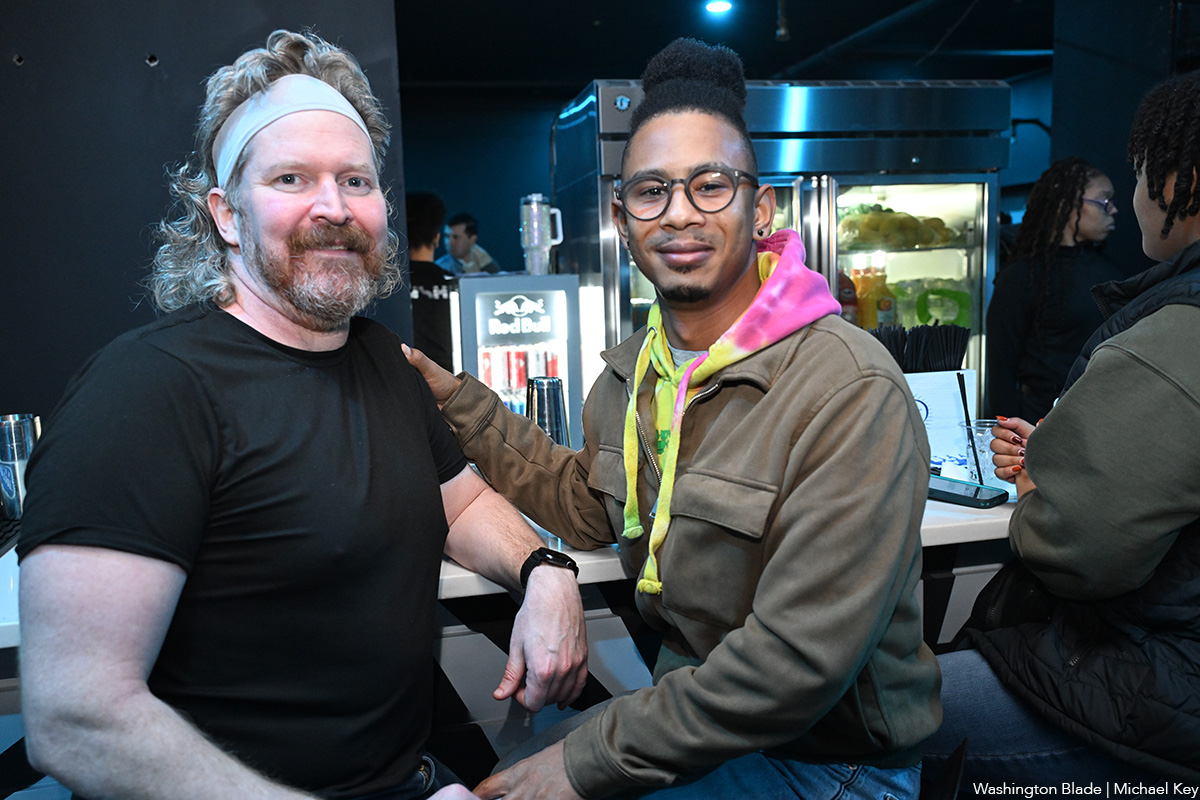
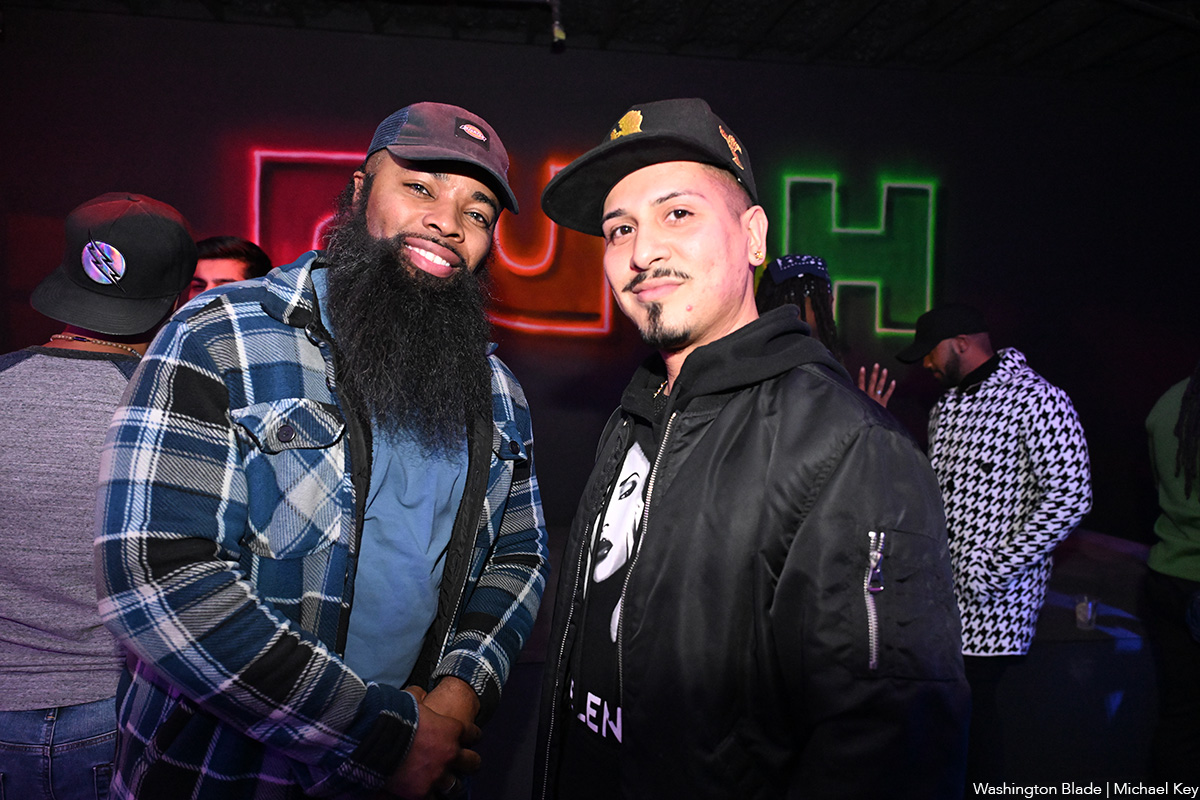

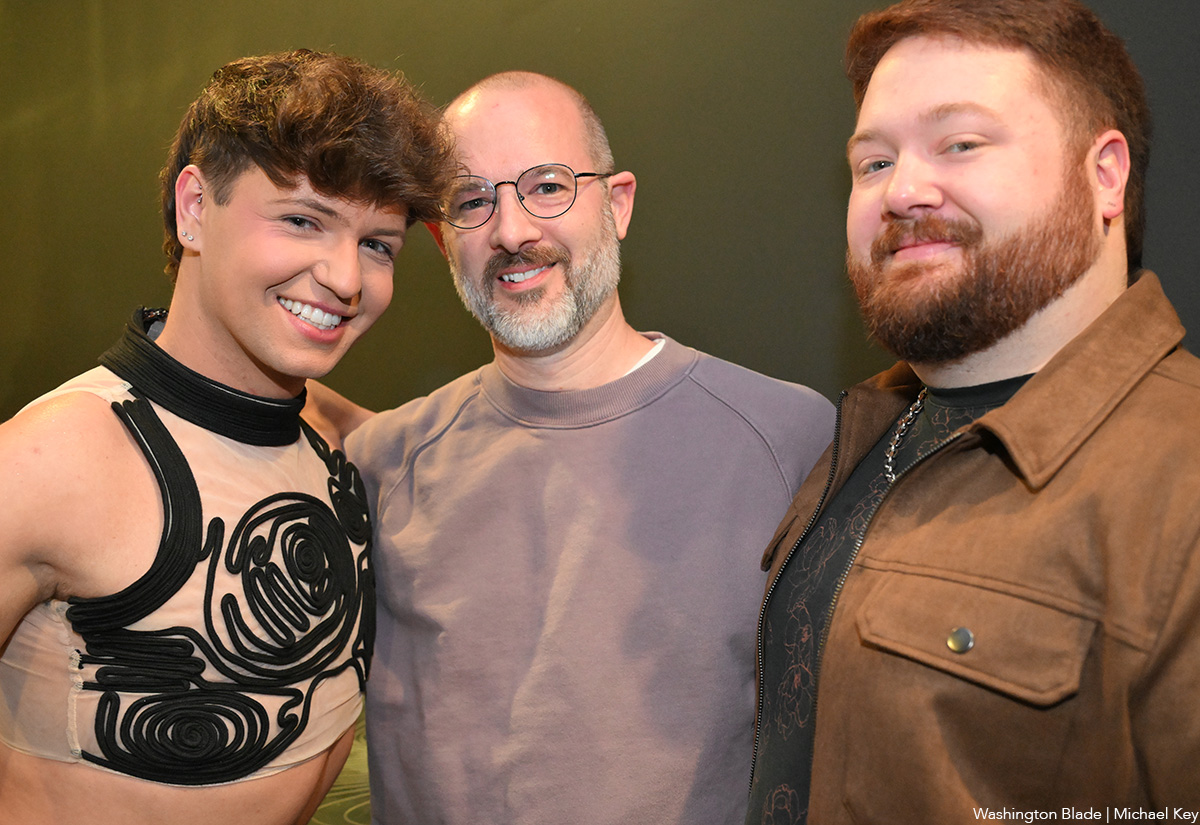
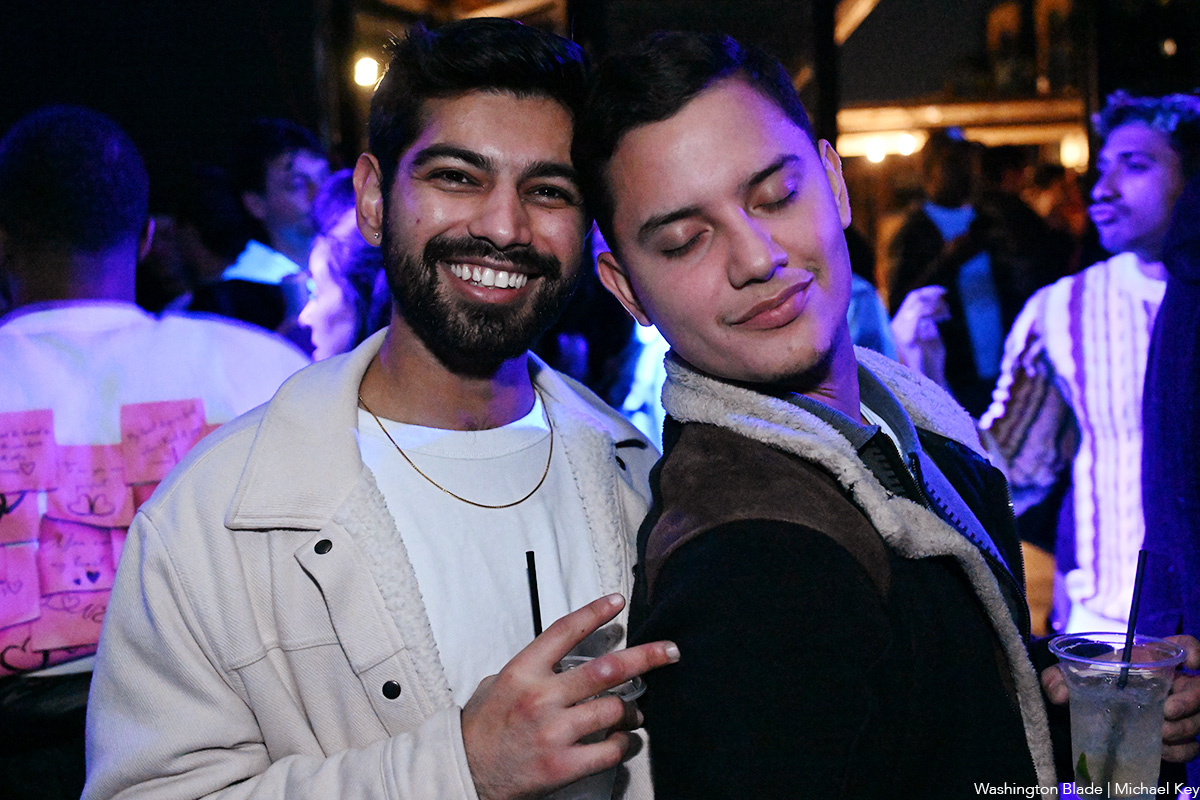
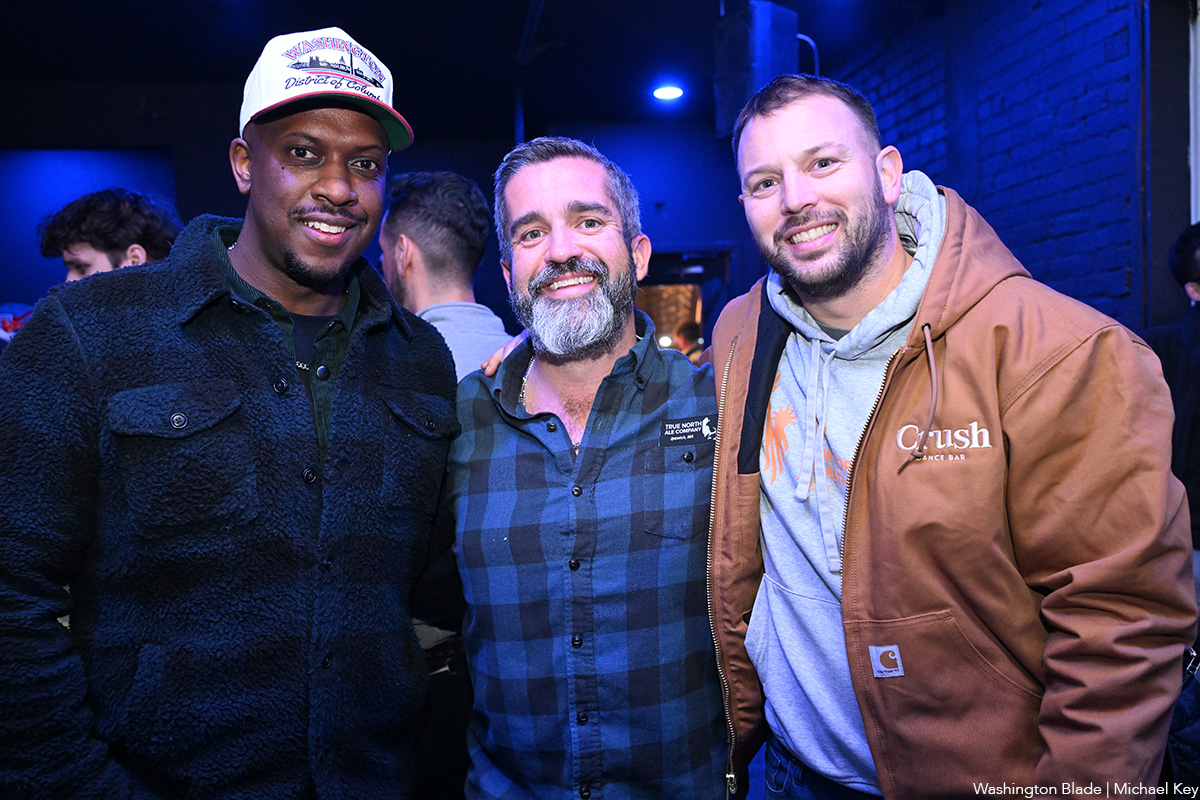

Movies
Holiday movie season off to a ‘Wicked’ good start
From Hallmark to horror, something for all tastes
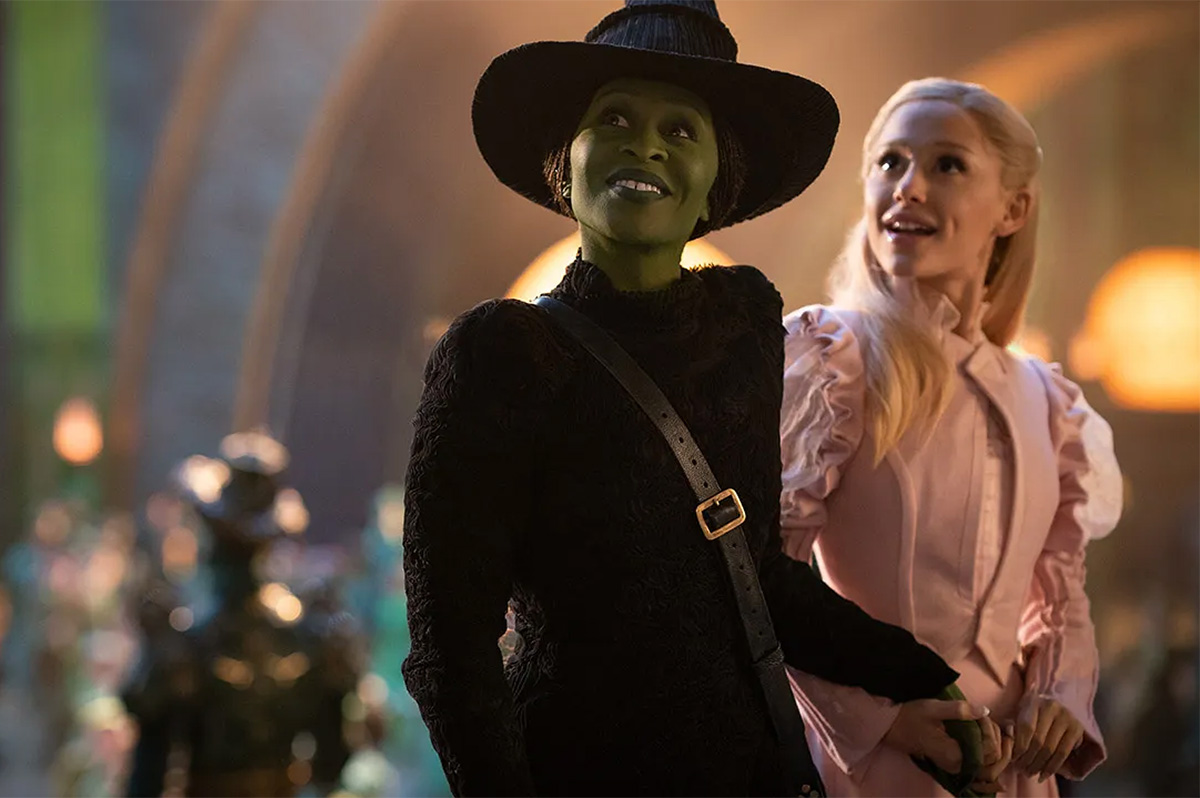
With Christmas just around the corner, it’s time to look ahead to the movies headed our way for December – and just like last year, the perfect film to launch it all is already here.
We’re talking, of course, of “Wicked: For Good” (now in theaters), the follow-up to last year’s smash adaptation of the hit Broadway musical that turns the witchy mythos of “The Wizard of Oz” inside out. A continuation rather than a sequel, director John M. Chu’s sumptuously crafted epic adapts the show’s second act to conclude the saga of green-skinned Elpheba – branded as a “wicked” witch by the authoritarian Wizard (Jeff Goldblum) for her rebellion against his suppression of Oz’s animal population – and her complicated relationship with “frenemy” Glinda (Ariana Grande-Butera), who is now serving as a sort of “double agent” by working to change the regime from within. As with the movie’s source material, there’s a definite “second act slump,” which Chu and co-screenwriters Winnie Holzman and Dana Fox attempt to counter with some minor retooling of the plot, incorporating more material derived from the Gregory Maguire novel that inspired it all, and adding a couple of new, original songs; it works, to a large degree, but the second half still lacks the bubbling sense of joy and excitement that made the first such an infectious hit.
Still, that’s just a quibble – and while this one may not leave us as giddy, it’s a worthy completion of the project, arguably improving the show by granting it levels of emotional resonance, political subtext, and overall depth that always seemed to be the missing element to the material. As for the cast (which also includes first out gay “sexiest man alive” Jonathan Bailey, alongside Michelle Yeoh, Marissa Bode, Ethan Slater, and Bowen Yang), they all continue to deliver powerhouse performances, breathing the kind of fully developed life into their fantastical characters that makes them all stick with us after the final high note is sung. So never mind the inevitable letdown that comes with the splitting of the story into two parts – taken as a whole, Chu’s “Wicked” saga is still a cinematic triumph that, frankly, very few of us expected it to be, and that’s hardly a reason to be disappointed.
As for the rest of the holiday season, there’s not much in the way of directly LGBTQ content coming to our screens – but there are still plenty of promising titles for us to look forward to.
Cutting to the chase for fans of the “Queer Christmas Romance” genre, we’re happy to report that Hallmark – the reigning champion of such fare – has two queer holiday entries lined up for you this season. First up is “A Keller Christmas Vacation” (Hallmark+, now streaming), a quirky tale of three adult siblings on a holiday cruise with their parents in Europe, each dealing with their own personal issues as they find “unexpected joy, romance, and family bonds” along the way – and gay heartthrob Jonathan Bennett, who’s pretty much become the poster boy for this genre, stars as one of them, with former Superman Brandon Routh providing extra eye candy for good measure. The second is “The Christmas Baby” (Hallmark, 12/21), starring Ali Liebert and Katherine Barrell as a lesbian couple who get a holiday surprise when they find a baby on their doorstep; they decide to adopt – which, naturally, requires them to negotiate the process of balancing their relationship and careers with the challenge of being new moms.
There’s also “The Christmas Writer” (Tello, now streaming) in which a lesbian romance author (Shelby Allison Brown) returns to her hometown in search of some Christmas spirit after the death of her mother, an ugly breakup, and a bad case of writer’s block. What she finds is a single lesbian mom (Callie Bussell), and flying sparks ensue.
For heartwarming Christmas cheer without the romcom trappings, there’s “Oh. What. Fun.” (Prime Video 12/3), which serves up Michelle Pfeiffer as a mom and grandma whose knack for putting on the perfect holiday gathering is taken for granted by her self-absorbed family – until they leave her behind on a family outing, forcing them to pull it together themselves. Pfeiffer leads an ensemble cast that includes co-stars like Eva Longoria, Felicity Jones, Denis Leary, Danielle Brooks, Jason Schwartzman, Maude Apatow, Joan Chen, and Chloë Grace Moretz as the queer daughter whose vegan girlfriend throws a last-minute wrench into the dinner menu. Sounds relatable!
Not holiday-themed but still a gift, “Merrily We Roll Along” (limited theaters 12/5) is the multiple-Tony-winning 2023 Broadway revival of Stephen Sondheim’s musical that tells the story – in reverse – of three high school BFFs as their relationship (and their ideals) shift across three decades. Featuring some of Sondheim’s most personal compositions, director Maria Friedman’s production of the show (starring Jonathan Groff, Daniel Radcliffe, and Lindsey Mendez) was immersively captured on film before closing in 2024 – and now, it’s on its way to movie screens as a special holiday treat for musical theatre lovers.
Likewise unseasonable and just as intriguing is “100 Nights of Hero” (limited theaters 12/5), an adaptation of the graphic novel by Isabel Greenberg (itself based on the classic folk tale “1,001 Nights”) in which a woman (Maika Monroe) is left alone by her neglectful husband (Amir El-Masry) for 100 nights at the estate of his seductive friend (Nicholas Galitzine, “Red, White, and Royal Blue”) as a test of her fidelity, with only her loyal maid (Emma Corrin, “The Crown”) as an ally. A sexy and stylish period fantasy with a queer-inlusive cast, it comes with buzzy acclaim from its Venice Film Fest debut, so we’ve definitely got this one on our list.
Kristen Stewart fans will be excited to see the debut of “The Chronology of Water” (limited theaters 12/5), the queer screen queen’s first film as producer, director, and co-writer. Adapted from Lidia Yuknavitch’s memoir, it stars Imogen Poots as a woman who overcomes personal trauma through her writing, and earned a lengthy standing ovation at its Cannes premiere earlier this year. The release is limited, with a wider expansion in early 2026 – but we’re confident it will be worth waiting for, if you have to.
“Hamnet” (Theaters, 12/12), from Oscar-winning director Chloé Zhao, delivers a speculative slice of behind-the-scenes history with a period tearjerker about William Shakespeare (Paul Mescal) and his wife, Agnes (Jessie Buckley), as they struggle to cope with the death of their 11-year-old son – a real-life tragedy that inspired the playwright in his creation of “Hamlet.” Advance reviews have offered high praise for this one, especially regarding Buckley’s performance; but as his fans know, Mescal is no slouch either, and they’ll no doubt be standing in line for this one whether they’re interested in Shakespeare or not. Emily Watson and Joe Alwyn also star.

It’s been 15 years since iconic producer/director James L. Brooks has made a movie, but the “Terms of Endearment filmmaker is back this month with “Ella McCay” (theaters, 12/12), a political dramedy set in the Obama era, which follows a young Lieutenant Governor (Emma Mackey) as she prepares to take over after her boss and mentor (Albert Brooks) accepts a Cabinet position with the new administration. Also featuring popular and prolific queer ally Jamie Lee Curtis, alongside Jack Lowden, Kumail Nanjiani, Ayo Edebiri, and Woody Harrelson, it’s sure to be a highlight of the season – after all, besides all his movies, Brooks is the man responsible for “The Mary Tyler Moore Show” and “The Simpsons,” so the track record speaks for itself.
Daniel Craig returns for one more round as Master Detective Benoit Blanc in “Wake Up Dead Man: A Knives Out Mystery” (Netflix, 12/12), the third installment in filmmaker Rian Johnson’s series of all-star comedic “whodunnits” that both spoof and pay homage to the classic murder mystery genre defined by Agatha Christie and other authors of her era. This time, the eccentric gay detective investigates a murder within a devout church community centered around a charismatic priest (Josh Brolin), in what’s described as “his most dangerous case yet,” and the list of suspects includes Josh O’Connor, Glenn Close, Mila Kunis, Jeremy Renner, Kerry Washington, Andrew Scott, Cailee Spaeny, Daryl McCormack, and Thomas Haden Church. If it’s even half as diabolically clever as the first two films, it’s bound to be a fun ride.
Screen icon Kate Winslet makes her directorial debut (from a screenplay by her son, Joe Anders) with “Goodbye June” (limited theaters 12/12, Netflix 12/24), a Christmas-set British drama about a family that gathers around its ailing mother (Helen Mirren) as she prepares to face the end of her life on her own terms. Inspired by the personal experiences surrounding the death of Winslet’s mother from ovarian cancer, some audiences might find the subject matter too much of a downer for the holiday season, but a light-hearted and positive tone – along with an ensemble cast that includes Toni Collette, Johnny Flynn, Andrea Riseborough, Timothy Spall, and Winslet herself – is likely to take the edge off for those willing to include a touch of bittersweet flavor in their holiday season.
For those who love the immersive, imaginative spectacle of James Cameron’s “Avatar” franchise, “Avatar: Fire and Ash” (theaters, 12/19) makes its eagerly awaited debut this month, with a third installment that sees the Na’vi people enmeshed in further struggle with exploitative humans from Earth – which gives the phrase “it’s going to be a Blue Christmas” a whole new meaning. The cast includes returning players Sam Worthington, Zoe Saldaña, Stephen Lang, Sigourney Weaver, CCH Pounder, Giovanni Ribisi, Kate Winslet, Cliff Curtis, Edie Falco, Jemaine Clement, and multiple other veterans of the series.
Because sometimes you need a creepy psychological thriller to offset all the seasonal sweetness, versatile director Paul Feig’s “The Housemaid” (Theaters, 12/19) gives us Sydney Sweeney as in the title role, who takes a job as live-in servant to a wealthy woman (Amanda Seyfried) and her family, and slowly begins to discover the dark secrets lurking behind her new employers’ seemingly perfect life. Brandon Sklenar, Michele Morrone, and Elizabeth Perkins also star.
With “Father Mother Sister Brother” (limited theaters 12/24), acclaimed cult filmmaker Jim Jarmusch re-emerges with an anthology movie that follows three estranged family relationships in three different countries around the world. Its ensemble cast features Tom Waits, Adam Driver, Mayim Bialik, Charlotte Rampling, Cate Blanchett, Vicky Krieps, Sarah Greene, Luka Sabbat, and transgender actress Indya Moore (“Pose”) – and oh, by the way, it won the Golden Lion at this year’s Cannes Film Festival, so cinema enthusiasts are especially advised to consider it a “must-see” for their holiday season.
Finally, if you’re a member of the “Cult of Chalamet,” you’re probably already looking forward to “Marty Supreme” (theaters 12/25), in which the gifted young “It Boy” actor plays an ambitious ping pong player who “goes to hell and back” on his path to becoming a champion in the sport. Loosely based on the story of real-life table tennis champion Marty Reisman, it’s helmed by acclaimed director Josh Safdie (“Uncut Gems”) and co-stars Gwyneth Paltrow, Odessa A’zion, Kevin O’Leary, Tyler Okonma, Abel Ferrara, Sandra Bernhard, and Fran Drescher – but let’s face it, it’s going to be all about Timothée, and we’re perfectly fine with that.
With all those titles to choose from, we’re pretty confident you’ll have enough to keep you entertained until next year, when we can look forward to thrilling new releases like the much-anticipated “Pillion,” with Alexander Skarsgård – but we’ll have more on that for our next preview. For now, enjoy the seasonal offerings already on your plate.
Happy holidays!
Bars & Parties
Impulse Group DC to host fundraiser
Giving Tuesday and Happy Hour held at Thurst Lounge

Impulse Group DC, a local advocacy organization, will host “Giving Tuesday and Happy Hour” on Tuesday, Dec. 2 at 6 p.m. at Thurst Lounge.
This event is a special happy hour fundraiser filled with good vibes, great food, and community connection. DJ Obie will be on deck keeping the energy high while you enjoy tacos, cocktails, and the kind of atmosphere only Thurst can deliver.
A portion of every signature cocktail sold goes directly toward supporting Impulse Group D.C.’s work in sexual health, mental health, harm reduction, and social justice for the D.C. community.
Admission is free and more details are available on Eventbrite.

